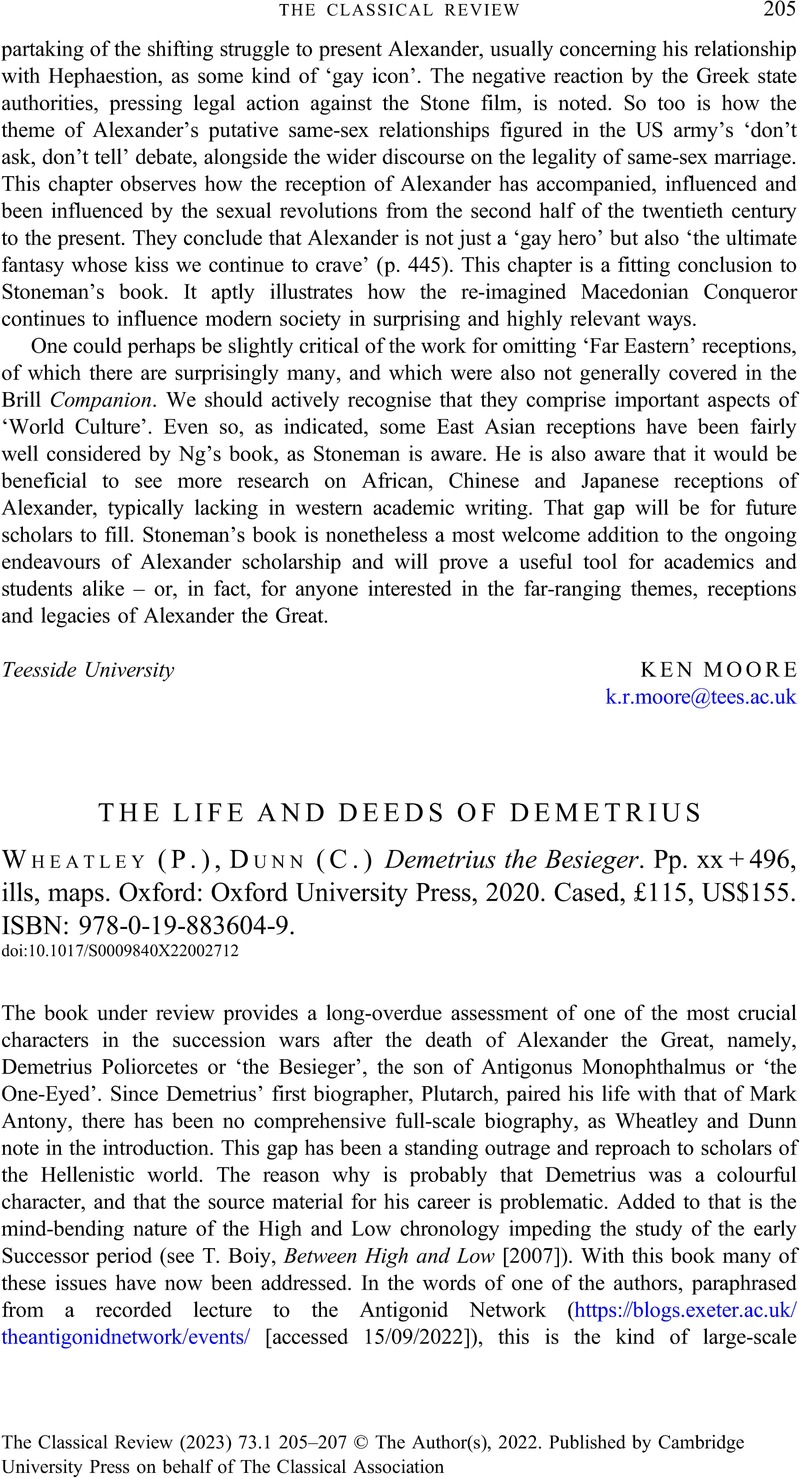No CrossRef data available.
Article contents
THE LIFE AND DEEDS OF DEMETRIUS - (P.) Wheatley, (C.) Dunn Demetrius the Besieger. Pp. xx + 496, ills, maps. Oxford: Oxford University Press, 2020. Cased, £115, US$155. ISBN: 978-0-19-883604-9.
Review products
(P.) Wheatley, (C.) Dunn Demetrius the Besieger. Pp. xx + 496, ills, maps. Oxford: Oxford University Press, 2020. Cased, £115, US$155. ISBN: 978-0-19-883604-9.
Published online by Cambridge University Press: 05 December 2022
Abstract
An abstract is not available for this content so a preview has been provided. Please use the Get access link above for information on how to access this content.

- Type
- Reviews
- Information
- Copyright
- Copyright © The Author(s), 2022. Published by Cambridge University Press on behalf of The Classical Association



